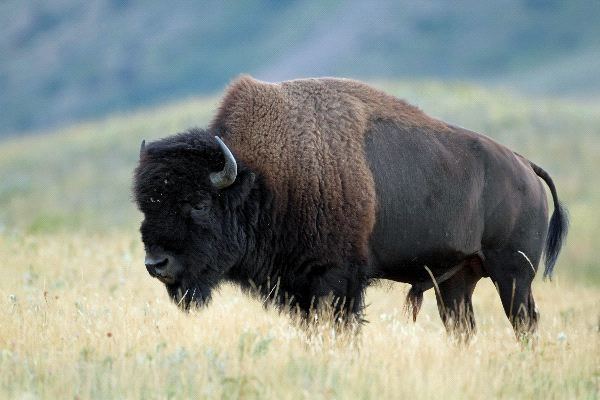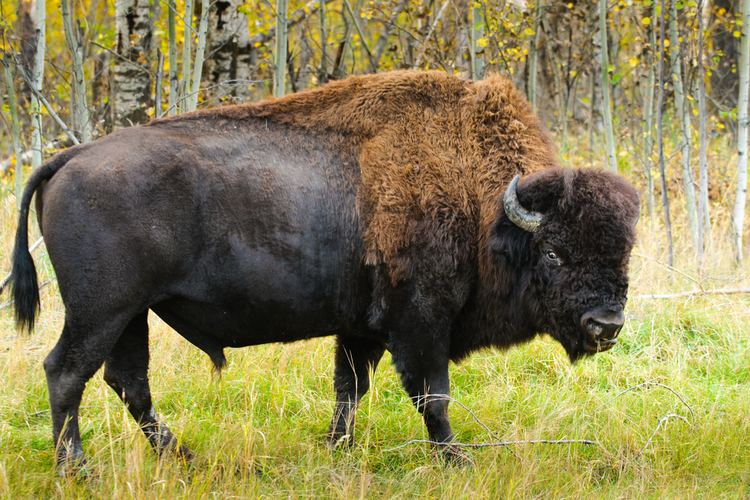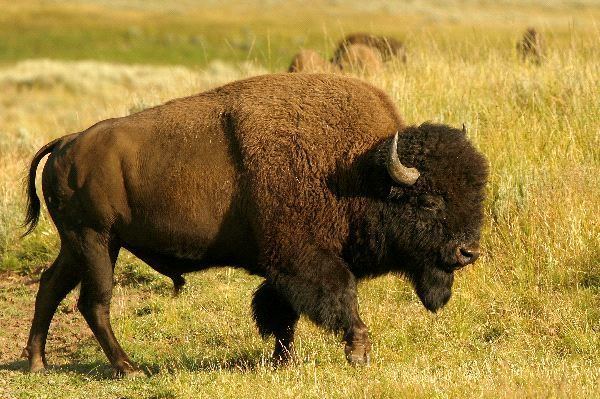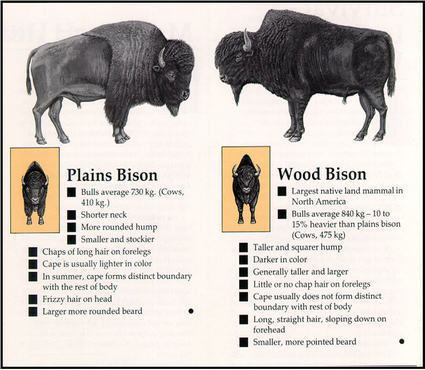Phylum Chordata Order Artiodactyla Rank Subspecies | ||
 | ||
Similar Plains bison, American bison, Bison, Steppe bison, European bison | ||
Wood bison elk island national park
The wood bison (Bison bison athabascae) or mountain bison (often called the wood buffalo or mountain buffalo), is a distinct northern subspecies or ecotype of the American bison. Its original range included much of the boreal forest regions of Alaska, Yukon, western Northwest Territories, northeastern British Columbia, northern Alberta, and northwestern Saskatchewan.
Contents
- Wood bison elk island national park
- Meet america s only wild wood bison
- Morphology
- Conservation
- Diseases
- Name
- References

Meet america s only wild wood bison
Morphology

In comparison to plains bison (the other surviving North American subspecies/ecotype), wood bison is heavier, with large males weighing over 900 kg (2,000 lb), making it the largest terrestrial animal in North America. The highest point of the wood bison is well ahead of its front legs, while the plains bison's highest point is directly above the front legs. Wood bison also have larger horn cores, darker and woollier pelages, and less hair on their forelegs and beards.
Conservation

In addition to the loss of habitat and hunting, wood bison populations have also been in danger of hybridizing with plains bison, therefore polluting the genetic stock.
As with other bison, the wood bison's population was devastated by hunting and other factors. By the early 1900s, they were regarded as extremely rare or perhaps nearly extinct. However, a herd of about 200 was discovered in Alberta, Canada, in 1957. This herd has since recovered to a total population around 2500, largely as a result of conservation efforts by Canadian government agencies. In 1988, the Committee on the Status of Endangered Wildlife in Canada changed the subspecies' conservation status from "endangered" to "threatened," where it remains.

On June 17, 2008, 53 Canadian wood bison were transferred from Elk Island National Park in Alberta, Canada, to the Alaska Wildlife Conservation Center near Anchorage, Alaska. There they were to be held in quarantine for two years, and then reintroduced to their native habitat in the Minto Flats area near Fairbanks, but this plan was still on hold until April 7, 2015. In May 2014, the U.S. Fish and Wildlife Service published a final rule allowing the reintroduction of a "non-essential experimental" population of wood bison into three areas of Alaska. The new regulation took effect June 6. The Alaska Department of Fish and Game introduced the first herd of 100 animals to the Innoko River area in western Alaska in spring 2015.
Currently, about 7000 wood bison remain in the wild, located in the Northwest Territories, Yukon, British Columbia, Alberta, and Manitoba.
In 2006, as part of an international conservation project, an outherd was established in Yakutia, Russia, where the related steppe bison died out over 6000 years ago. Additional bison were sent from Alberta in 2011 and 2013 to Russia bringing the total to 120.
Diseases
Publicly owned free-ranging herds in Alberta, British Columbia, Yukon, and the Northwest Territories comprise 90% of existing wood bison, although six smaller public and private captive-breeding herds with conservation objectives comprise roughly 10% of the total (n ≈ 900). These captive herds and two large isolated free-ranging herds in the Yukon and Northwest Territories all derive from disease-free and morphologically representative founding stock from northern Wood Buffalo National Park in northeastern Alberta and southern Northwest Territories. These captive herds are particularly important for conservation and recovery purposes, because the larger free-ranging herds in and around Wood Buffalo National Park were infected with bovine brucellosis and tuberculosis after 7,000 plains bison were trans-shipped by barge from Buffalo National Park near Wainwright, Alberta, in the 1920s.
Diseases including brucellosis and tuberculosis remain endemic in the free-ranging herds in and around Wood Buffalo National Park. The diseases represent a serious management issue for governments, various local Aboriginal groups, and the cattle industry rapidly encroaching on the park's boundaries. Disease management strategies and initiatives began in the 1950s, and have yet to result in a reduction of the incidence of either disease despite considerable expenditure and increased public involvement.
Name
The term "buffalo" is sometimes considered to be a misnomer for this animal, as it is only distantly related to either of the two "true buffalo", the Asian water buffalo and the African buffalo. However, "bison" is a Greek word meaning ox-like animal, while "buffalo" originated with the French fur trappers who called these massive beasts bœufs, meaning ox or bullock—so both names, "bison" and "buffalo", have a similar meaning. Though the name "bison" might be considered to be more scientifically correct, as a result of standard usage the name "buffalo" is also considered correct and is listed in many dictionaries as an acceptable name for American buffalo or bison. In reference to this animal, the term "buffalo" dates to 1635 in North American usage when the term was first recorded for the American mammal. It thus has a much longer history than the term "bison", which was first recorded in 1774. The American bison is very closely related to the wisent or European bison.
